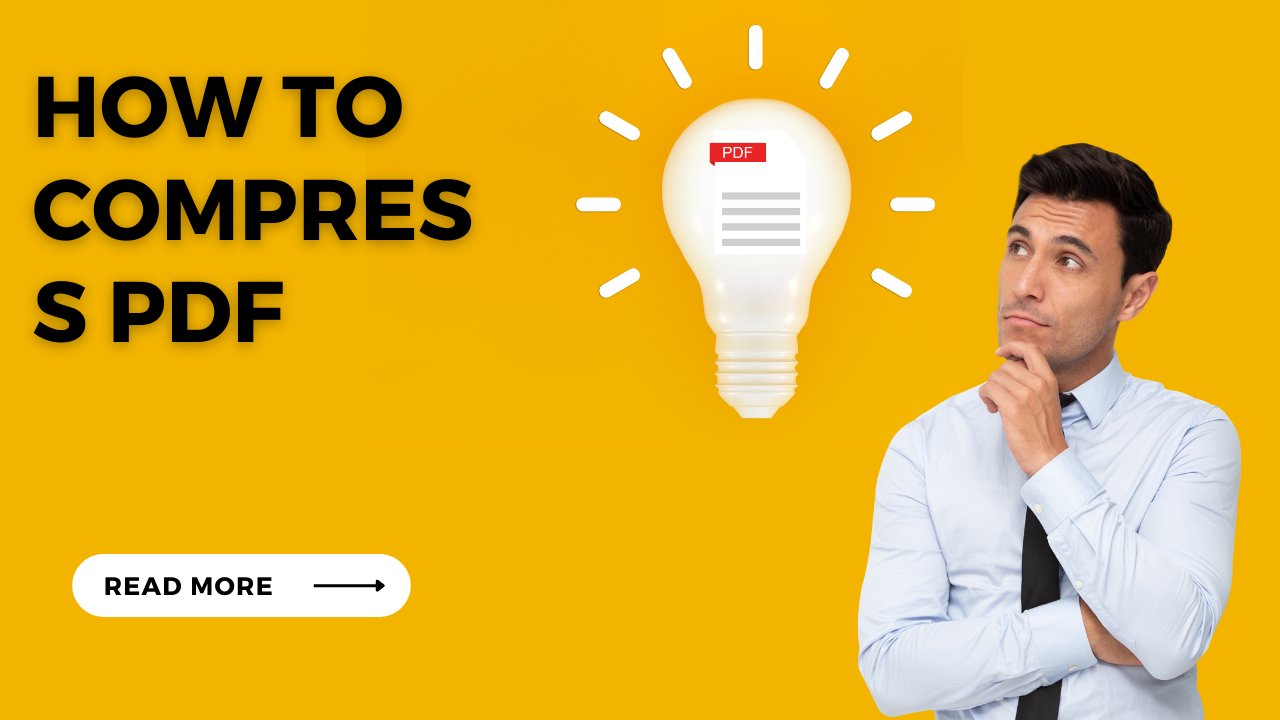Importance of compressing PDF files
Mastering PDF Compression: Simple Ways to Shrink Your Files
In today’s digital world, sharing documents electronically has become a norm whether it’s for work, school, or personal projects. PDF files are popular due to their universal compatibility and consistent formatting. However, the larger the file size, the more challenging it can be to send via email or upload to a website. In this article, we will explore how to effectively compress PDF files without compromising their quality, making document sharing seamless and efficient.
Why Compress PDF Files?
When it comes to managing digital files, understanding the need for compression is essential.
“Compressing your PDF files not only saves storage space but also improves the efficiency of document sharing.”
The Benefits of PDF Compression
- Easier Sharing: Smaller file sizes facilitate quicker uploads and downloads, making collaboration smoother.
- Reduced Storage Needs: Compressed files take up less space on your devices or cloud storage.
- Faster Email Delivery: Many email services have attachment size limits. Compressing your PDFs can help you stay within these restrictions.
- Improved Performance: Working with smaller files can lead to better performance in software applications.
Methods to Compress PDF Files
Now that we understand the importance of compression, let’s explore the various methods available. Each has its advantages and situation where it may be the best choice.
1. Online PDF Compressors
One of the easiest ways to compress PDF files is by using online tools. Websites like Smallpdf, ILovePDF, or PDF Compressor allow you to upload your documents and compress them within seconds.
- Pros:
- No software installation needed.
- Quick and intuitive interfaces.
- Cons:
- Requires an internet connection.
- Potential privacy concerns with sensitive documents.
Recommended Online Tools
2. Using PDF Software
For those who prefer offline solutions or require frequent compression, dedicated PDF software may be the best option. Programs like Adobe Acrobat Reader, Nitro PDF, or Foxit PhantomPDF offer advanced features for managing and compressing PDF files.
- Pros:
- More control over compression settings.
- No internet required after installation.
- Cons:
- May require purchasing a software license.
Steps to Compress Using Adobe Acrobat
- Open your PDF in Adobe Acrobat.
- Click on ‘File’ and then select ‘Save As Other.’
- Choose ‘Reduced Size PDF.’
- Follow the prompts to adjust your settings and save.
3. Using Built-In Tools on Your Computer
Both Windows and Mac operating systems come with built-in tools that can help compress PDF files, albeit with limited functionality.
Windows
- Print to PDF Method:
- Open the PDF file.
- Select ‘Print’ and choose ‘Microsoft Print to PDF’ as your printer.
- Save the new file, which will typically be smaller.
Mac
- Preview App:
- Open the PDF in Preview.
- Click on ‘File,’ then ‘Export.’
- In the ‘Quartz Filter’ section, select ‘Reduce File Size.’
- Save the new PDF.
4. Using Mobile Apps
In our mobile-first world, sometimes you need to compress on the go. There are numerous apps available for both Android and i users. Apps such as PDF Compressor or Compress PDF can handle the task efficiently.
- Pros:
- Convenient and portable.
- Good for quick compressions on the move.
- Cons:
- Limited features compared to desktop applications.
Example Mobile Apps
Tips for Optimizing PDF Files Before Compression
Before jumping into compression, consider these helpful tips to ensure you’re making the most of your PDF files:
- Remove Unwanted Elements: Delete any unnecessary images or pages from your PDF to reduce its size before compression.
- Optimize Images: Use image editing software to lower the resolution of images rather than just compressing the PDF.
- Limit Fonts: The more fonts you use, the larger the file size. Stick to a few familiar fonts for best results.
Conclusion
Compressing PDF files is a valuable skill that helps streamline our digital workflows. By utilizing online tools, dedicated software, or even built-in features on your computer, you can easily reduce file sizes and enhance your efficiency. Remember, while compression is essential for facilitating sharing and storage, it’s equally crucial to maintain a balance between file size and quality. Feel free to explore the methods discussed above and choose the one that fits your needs.
“Embrace the tools at your disposal, and make your document sharing experience smoother and more efficient!”
If you found this guide helpful, share it with others who may also benefit. Happy compressing!


